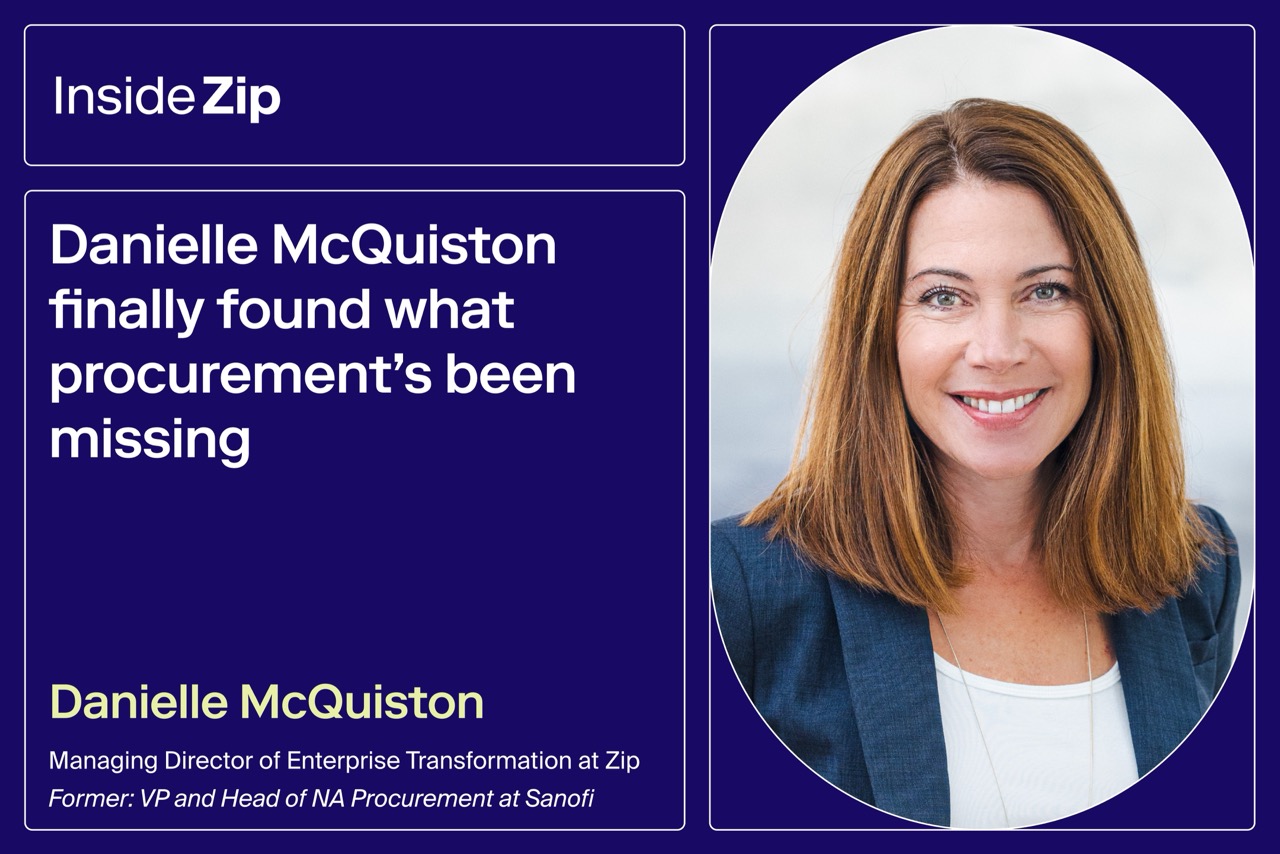
What is a procurement policy & how to create one
Learn to create procurement policies and procedures to streamline operations.

A well-crafted procurement policy can be a transformative asset driving an organization’s procurement activities, ensuring consistency, compliance, and efficiency.
It’s become increasingly important as markets and regulatory conditions continue to shift, as the absence of clear, regularly updated, and comprehensive procurement policies can lead to confusion, errors, and inefficiencies.
A procurement policy is a set of guidelines that govern the procurement process, ensuring that all purchasing activities align with the organization’s strategic goals and comply with regulatory requirements.
This guide will explore how to create effective procurement policies, share best practices, and highlight the key components necessary for a comprehensive policy. We’ll also take a look at how Zip supports the creation and management of effective procurement policies, helping companies streamline their procurement processes at any scale.
How to Create a Procurement Policy
Crafting a procurement policy for your company is an important step to achieving consistency and control within your broader procurement process. Here is a simple and effective outline to get you started.
Getting started
- Set objectives: Define the primary goals your procurement policy aims to achieve. These objectives should align with your organization’s broader goals.
- Identify key stakeholders: Involve key stakeholders such as finance, procurement, operations, and other relevant departments to ensure their needs are addressed.
Gathering input
Collect insights and requirements from various departments to ensure the procurement policy addresses all organizational needs. You can achieve this through surveys, interviews, and workshops with stakeholders and end-users to gather comprehensive input.
Drafting the policy
When drafting the procurement policy, focus on clarity, comprehensiveness, and accessibility. Ensure the policy is written in plain language, includes all necessary details, and is easily understood by all staff members involved in the procurement process.
Procurement Policy Best Practices
Developing a procurement policy requires adherence to industry-standard best practices to ensure it is effective and sustainable. Some important ideas to keep in mind while crafting your policy:
Understand organizational objectives
Aligning procurement objectives with the broader goals of the organization is the way to support growth and efficiency. Be sure to communicate the way procurement activities contribute to achieving strategic company goals and organizational success.
Integrate values and ethics
Incorporate your organization’s values, ethics, and sustainability goals into the procurement policy. This way you can promote ethical behavior, reduce conflicts of interest, and support sustainable procurement practices.
Key components of an effective procurement policy
A comprehensive procurement policy should include several key components to provide clear guidance and ensure effective procurement management.
- Scope and purpose
Define the policy’s scope and its objectives to provide clear guidance on its application. This section should explain the purpose of the policy and the procurement activities it covers.
- Core elements overview
List and explain the essential sections that should be included in every procurement policy, such as objectives, scope, roles and responsibilities, and procurement methods.
- Roles and responsibilities
Outline the roles of the procurement team and other stakeholders in the procurement process. Clearly defining responsibilities helps ensure accountability and smooth operations.
- Procurement processes and procedures
Provide a detailed description of procurement procedures, from need identification to contract management. This section should cover the entire procurement life cycle—solicitation, competitive bidding, and contract award processes.
- Vendor management and selection criteria
Establish criteria for vendor selection, evaluation, and management to ensure quality and reliability. You’ll want to keep close track of these evaluation criteria while managing vendor relationships and conducting regular performance assessments. Find a template that works for you, and stick to it.
- Policy compliance and ethics
Emphasize the importance of compliance with legal requirements and ethical standards. This section should address issues such as conflict of interest, code of conduct, and the handling of gratuities.
- Risk management and mitigation strategies
Provide guidance on incorporating risk assessment and mitigation measures to manage procurement risks effectively. Be sure to identify potential risks and develop strategies to minimize their impact.
The 5 R’s of Procurement
The 5 R’s of procurement—Right Quality, Right Quantity, Right Time, Right Place, Right Price—are fundamental principles that ensure procurement processes are efficient and effective.
- Right Quality: Ensure that the goods or services procured meet the required quality standards. Develop evaluation criteria and a vendor selection process that prioritizes quality.
- Right Quantity: Purchase the correct amount to meet organizational needs without overstocking or understocking. Use data analysis and forecasting to determine accurate quantities.
- Right Time: Procure goods and services at the right time to support operational requirements and avoid delays. Establish a procurement plan and timelines for each purchasing activity.
- Right Place: Ensure that the goods or services are delivered to the right location. This involves effective logistics and inventory control.
- Right Price: Secure the best value for the money spent. Consider the total cost of ownership—not just the upfront lowest price or dollar amount—and engage in competitive bidding processes.
Applying the 5 R’s in policy creation will help optimize procurement processes and improve decision-making, ensuring that all procurement activities are aligned with organizational objectives and efficiency goals.
Benefits of an effective procurement policy
An effective procurement policy offers numerous benefits, enhancing both operational efficiency and financial performance.
Operational efficiency
A well-defined procurement policy streamlines procurement processes, reducing time-to-purchase and improving the efficiency of procurement activities. Clear procurement procedures and purchasing processes eliminate ambiguity and ensure that all staff members follow standardized methods.
Cost Savings and financial control
Effective procurement policies contribute to budget control and cost savings by promoting competitive bidding, optimizing supplier relationships, and implementing cost-effective procurement methods. A smart procurement policy is also a purchasing policy, that ensures bidders and any of those making expenditures are managed prudently—and that procurement and purchasing decisions are made with financial sustainability in mind.
Risk management
A comprehensive procurement policy mitigates risks associated with supplier reliability, compliance, and market changes. By incorporating risk assessment and mitigation strategies, the policy helps safeguard the organization against potential disruptions and legal issues.
How to ensure compliance with internal & external regulatory requirements
Ensuring compliance with both internal policies and external regulatory requirements is a keystore of effective procurement management for any company, from the largest multinational down to a local small business. Non-compliance can lead to legal issues, financial penalties, and reputational damage. Here’s how to ensure compliance:
Overview of typical regulatory requirements
Procurement activities—sourcing and purchases of goods and services—are governed by a variety of laws, regulations, and standards. Some of these worth paying attention to are:
- Government regulations: Such as the Federal Acquisition Regulation (FAR) in the United States or the Public Contracts Regulations in the UK.
- Industry standards: Like ISO standards for quality management.
- Internal policies: Organizational guidelines that dictate procurement procedures and ethical standards.
Compliance with these requirements requires adhering to rules regarding any competitive process like bidding, various conflicts of interest, solicitation processes, and procurement procedures. Stay alert!
Compliance strategies
- Regular reviews and audits: Conduct regular audits to ensure that procurement activities comply with both internal and external requirements within a given timeframe. You may want to review prior approval and other procurement process checking for adherence to established evaluation criteria, and verify that all vendor selection and purchase orders comply with regulatory standards.
- Training and education: Ensure that all staff members involved in procurement are well-trained on the relevant laws, regulations, and internal policies. This can be achieved through regular training sessions and the provision of up-to-date resources.
- Documentation and record-keeping: Maintain thorough documentation of all procurement activities. Your vendor record should include every request for information (RFI), request for quotation (RFQ), request for proposal (RFP), requisitions, reimbursement, and contract awards. Proper documentation and proposal evaluation helps in demonstrating compliance during audits and reviews.
- Automated compliance tools: Leverage procurement software like Zip to automate compliance monitoring. Automated systems can track procurement activities in real-time, flag potential non-compliance issues, and ensure that all steps in the procurement process adhere to established guidelines.
Leverage Zip to create, automate & ensure procurement policy adherence
Zip offers comprehensive tools to help organizations create, automate, and ensure adherence to their procurement policies. Here’s how Zip can support your procurement management:
- Automated Procurement Processes: Zip automates the entire procurement process, from requisition to payment. This automation ensures that all procurement activities follow the established policies, reducing the risk of human error and non-compliance.
- Integration with Organizational Systems: Zip seamlessly integrates with existing ERP and financial systems, streamlining operations and data management. This integration ensures that all procurement data is accurate and up-to-date, facilitating better decision-making and policy adherence.
- Real-time Compliance Monitoring: Zip provides real-time monitoring tools that enforce compliance with procurement policies. These tools can track procurement activities, identify potential compliance issues, and provide alerts to procurement managers, ensuring immediate action is taken to rectify any deviations.
- Data-Driven Insights for Continuous Improvement: Zip’s analytics features offer detailed insights into procurement activities, helping organizations identify opportunities for policy optimization and process improvement. By analyzing spend data, procurement leaders can make informed decisions and continuously refine their procurement policies to better meet organizational goals.
To see how Zip can accelerate your procurement process and help you achieve significant cost savings while ensuring compliance, request a demo today and take the first step towards more efficient and cost-effective procurement.

Maximize the ROI of your business spend

Enter your business email to keep reading



























.webp)




















.avif)












.avif)










.webp)





.avif)












.avif)
